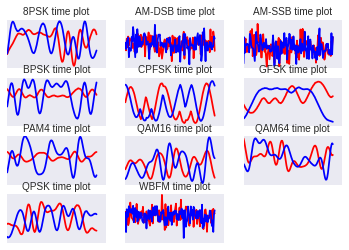Introduction
The purpose of this project is to explore the usage of Spiking Neural Networks and an approach for training them (Deep Continuous Local Learning - DECOLLE) in Software Defined Radios for the task of modulation classification.
The project is carried out by Owen Jow and Simon Kaufmann at the University of California, San Diego during Spring 2020.
Abstract
Due to the growing need for communication services to share a limited frequency spectrum, the ability to classify signals by modulation has risen in importance. At the same time, the desirability of small, low-cost communication devices means that efficiency of the solution is almost as important as efficacy. With this in mind, our method leverages spiking neural networks (an emerging event-based variant of traditional neural networks) to perform modulation classification more efficiently than previous approaches. We train a model using deep continuous local learning, quantize the parameters, and validate our approach on the RadioML dataset, a publicly available collection of I/Q radio signals. Using this method, we achieve a peak accuracy of 56% with 955K network parameters. We also propose a quantized model with 8-bit precision for static parameters and 24-bit precision for runtime parameters, where the quantization accounts for a drop in accuracy of around 1.5%. These results represent a first step toward an efficient, event-driven solution for signal classification.
Find the full final report as PDF here
Background
Radio communication plays an important role in modern day life and shapes the way people are able to communicate with each other through mobile devices. A growing number of communication services (like the 5G mobile phone network) need to share a very limited frequency spectrum. The ability to share the same frequency range for different services could therefore be useful in the future, but requires being able to classify and recognise received radio signals by the service they belong to. In this project, we aim to implement an efficient and low-power computing system to classify radio signals. Our method will be based on a learning system inspired by biological neurons and will be evaluated using RadioML, a publicly available dataset of radio signals.
Goal
Based on the DCLL library implementation for spiking neural networks and deep continuous local learning, we are optimizing a neural network to classify the radio signal data of the RadioML Dataset.

The trained network is then quantized using the Brevitas quantization framework to prepare it for efficient implementation on an FPGA.
Previous work on modulation classification used classic convolutional neural networks for the task. Due to less developed and sophisticated training methods available for SNNs, we do not anticipate to achieve better accuracy on the dataset, but we hope to lay groundwork for an efficient low-power implementation that will require fewer resources than conventional neural networks.